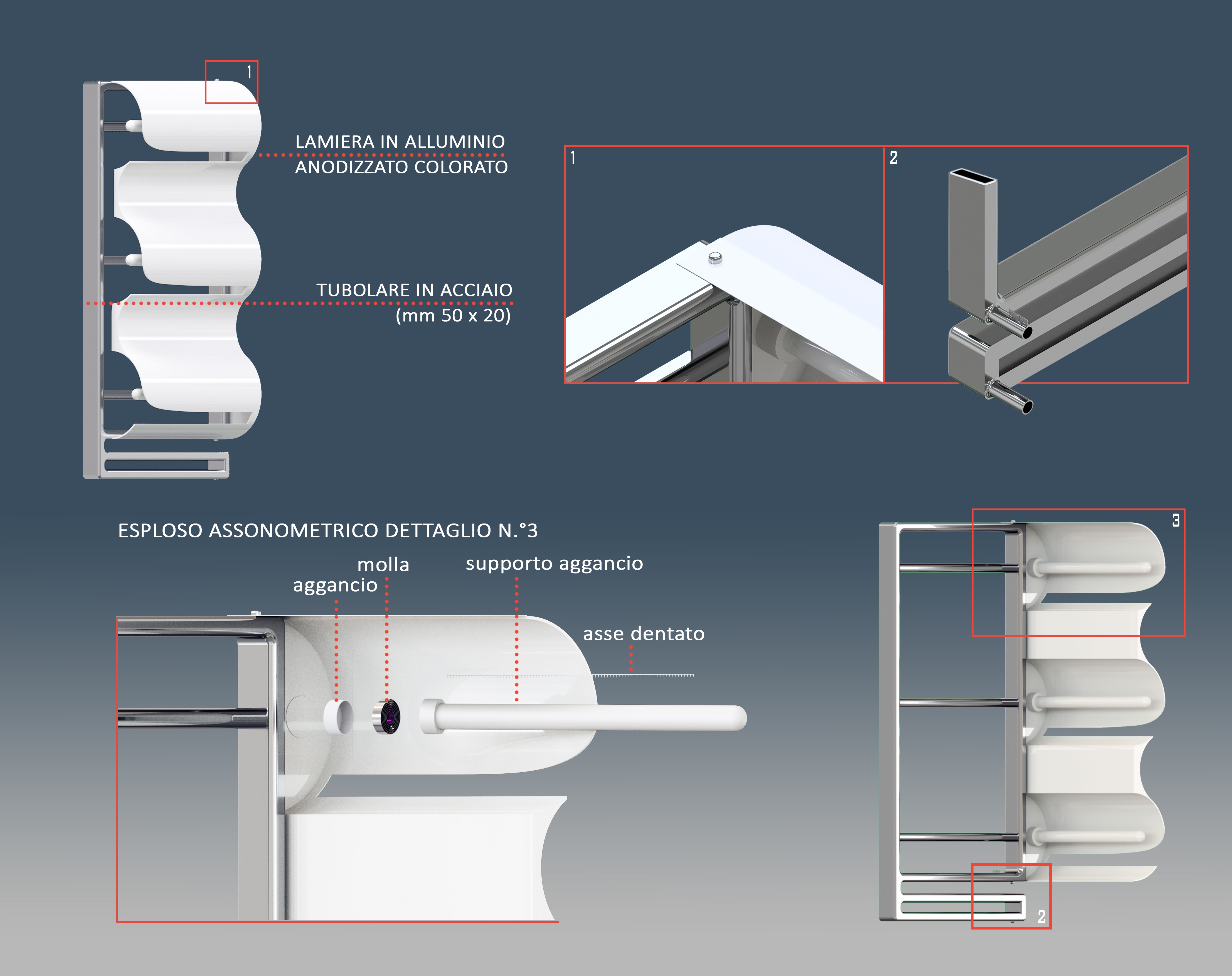Linteum is the first heated towel rail capable of keeping the proliferation of bacteria and fungi at bay in towel fabrics.
Linteum is an innovative designer radiator, capable of keeping towels dry at all times, creating a warm air chamber that completely envelops the fabrics. The Latin name was used to refer to the people who advocated well-being and were one of the first to have used heat as a cure for body ailments: the Romans.
With this in mind, it was decided to develop a functional design that uniformly concentrated the heat on the sheets inside the sheet metal, to allow for correct evaporation of the residual water inside the fabric.
The proliferation of bacteria and fungi is therefore greatly reduced and the division between the towels in the different compartments reduces the possibility of contagion of skin diseases. Those who visit a house, for example, are not forced to use the family towel, but the one dedicated to guests. Personalization can take place thanks to named magnets to be placed on the sheet metal, in correspondence with the personal sheet (e.g. Grandma, Guests, Mom, Filippo, etc.).
Its particular shape protects the fabrics from the vapor sprayed during the use of hot water and from any splashes from the toilet drain, avoiding humidification or further contamination of the same. Furthermore, Linteum prevents the frequent falling of towels on the floor after use and the deposit of dust on the heated pipes below; thus creating an excellent fusion between functionality and aesthetics. The innovative designer radiator is made up of two elements: the sheet metal and the tubular structure, respectively in aluminum and steel. The two adhere thanks to a rotational constraint and a snap coupling. To open, just lever one of the 3 “waves” of the sheet metal; in this way the insertion or replacement of the towels is performed without space constraints. The supports on which they are wrapped are fixed to the sheet metal by means of a mechanism containing a spring.
Linteum embodies design, comfort and hygiene, which play a fundamental role in a place where the body is taken care of.
Project
Design Warm Contest
When the towel is pulled for use, the spring exerts an opposing force, which will tend to rewind it once released. A fine toothed axis has been inserted to prevent the towel from slipping during rotation.
When the hot water circulates inside the tubular structure, the heat passes both to the sheet metal and to the supports by conduction; this accelerates the evaporation process, heating the fabric both from the center outwards and vice versa. The tubular structure has a safety valve, a stop valve and two connections for water circulation. The heat spreads towards the external environment both through the sheet metal and through the sides and uncovered pipes. The thermal yield, with a ΔT=50°C between the radiator and the environment, is equal to 16.4 W/m3 ( using the formula Q(Δt) = Qn • (Δt/50)n ) making it suitable for structures in energy class A, B and C.
What are its advantages?
Zero Dust Accumulation
The aluminum sheet protects the heated structure from dust.
Fall arrest system
Thanks to the cylindrical supports, the sheets rotate without unhooking and falling to the floor.
Hygiene
Distinction between personal towels thanks to the name magnets.
Thermal yield
An excellent thermal yield, allows its installation in environments in energy class A, B and C.
Materials with high strength and conductivity
Steel and Aluminum
Easy Replacement
The side opening greatly facilitates the replacement of towels.




